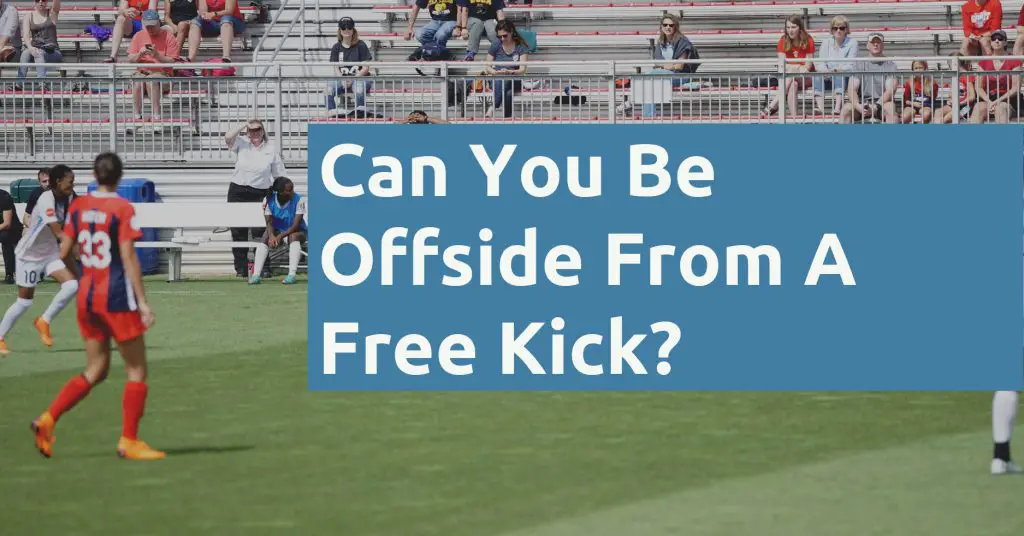Last updated on December 1st, 2022
The offside rule does not apply to a goal kick, throw in or corner kick.
However, does it apply to a free kick?
Contents
Can you be offside from a free kick?
You can be ruled offside from a free kick if you are in an offside position when the ball is played by your teammate. If you were in an offside position when the free kick occurs and become involved in active play, you will be ruled offside.
In actual fact, the free kick is the only set piece where you can commit an offside offence. There are 3 other types of set pieces: the corner kick, goal kick and throw-in.
For these scenarios, you will not commit an offside offence even if you were in an offside position!
The football laws have always allowed for an offside offence to be committed from a free kick. There were some appeals to prevent offside offences being called from a free-kick (in 1929, 1974 and 1986).
The FA managed to do a trial of exempting a free kick from being called offside in 1987. This was done in the GM Vauxhall Conference, which is the 5th highest league in the English league system.
This was what they concluded from this trial:
(The new ruling) ‘assisted further the non-offending team and also generated more action near goal, resulting in greater excitement for players and spectators’
IFAB
Interestingly, the FA decided to withdraw this proposal!
Here is an further explanation of how the offside rule applies during a free kick:

You need to be in an offside position first
If you were to commit an offside offence, you will first have to be in an offside position.
Here is the official definition of ‘being in an offside position by the Laws of the Game:
- any part of the head, body or feet is in the opponents’ half (excluding the halfway line) and
- any part of the head, body or feet is nearer to the opponents’ goal line than both the ball and the second-last opponent
- The hands and arms of all players, including the goalkeepers, are not considered.
During a free kick, the defenders forming the wall will most likely be the second-last opponents.
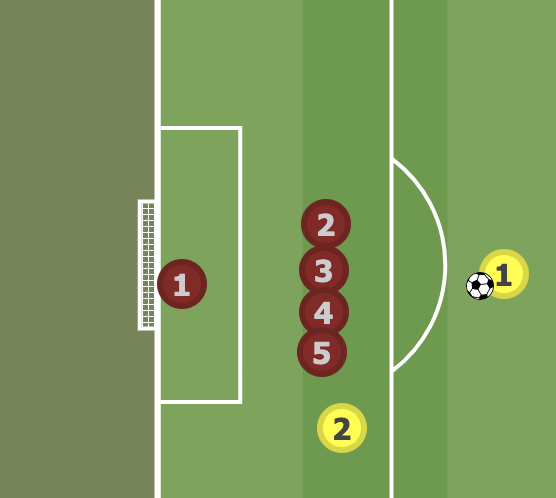
This is because the goalkeeper will be the only one who is at the goal-post.
In this case, the offside line will be referenced from the defender in the wall who is the nearest to the goal-line.
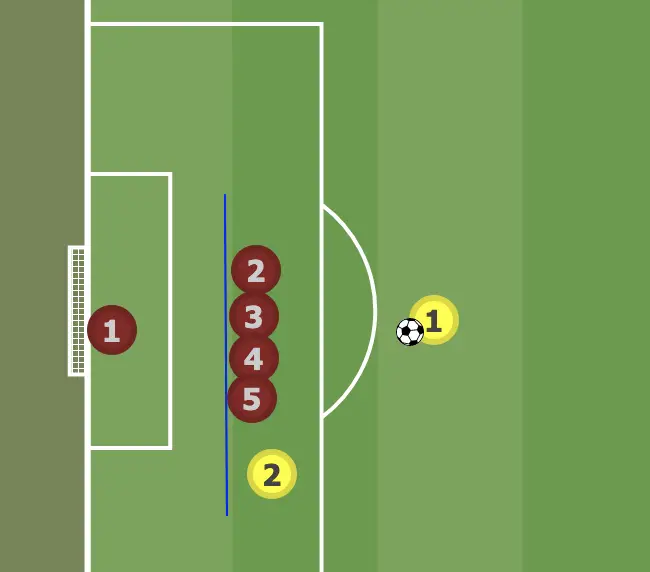
If you are further away from the goal-line than the second-last opponent in the wall, you are onside. If you are behind the wall, you will be in an offside position.
Some defenders may stand at the goal post
However, some defenders may stand at the goal post, next to the goalkeeper.

They may do this to try and save a direct free kick. This helps the goalkeeper to focus on a smaller area of the goal, as the defender can head the free kick shot away.
In this case, the defender at the goal post will be considered as the second-last opponent. The offside line will be taken with reference to him.

So long as you’re standing in front of this defender, you will be in an onside position.
This gives you much more freedom to move around the pitch. You are even able to stand behind the free kick wall!
You have to be actively involved in play too
If you are just in an offside position, you will not be called offside. You have to be in an offside position AND be involved in active play when your teammate plays the ball.
Your position will be noted only when your teammate plays the ball. This usually occurs when your teammate kicks the ball from the free kick.
Here are the 3 ways that you can be considered to be involved in active play:
- Interfering with play
- Interfering with an opponent
- Gaining an advantage
In the laws, it did not mention that you need to have the ball to interfere with an opponent. It is possible to be called offside even if you don’t have the ball.
Here are some possible ways that you may be called offside from a free kick:
- Your teammate lobs the ball over the free kick wall to you
- You were in an offside position when your teammate shoots, and you score a goal from a rebound or goalkeeper save
- You interfere with the goalkeeper by blocking his line of sight
Once you’re in an offside position and become involved in active play, you will be called offside!
Some defenders may play the offside trap
There is a tactic that defenders may use which is called the offside trap.
This means that the second-last opponent has to run forward before your teammate plays the ball. This way, you will be closer to the goal-line and you will be offside if you become involved in active play.
Here are some examples of defenders using this offside trap during a free kick:
In most cases, you can see that all the defenders rush forward before the free-kick taker kicks the ball.
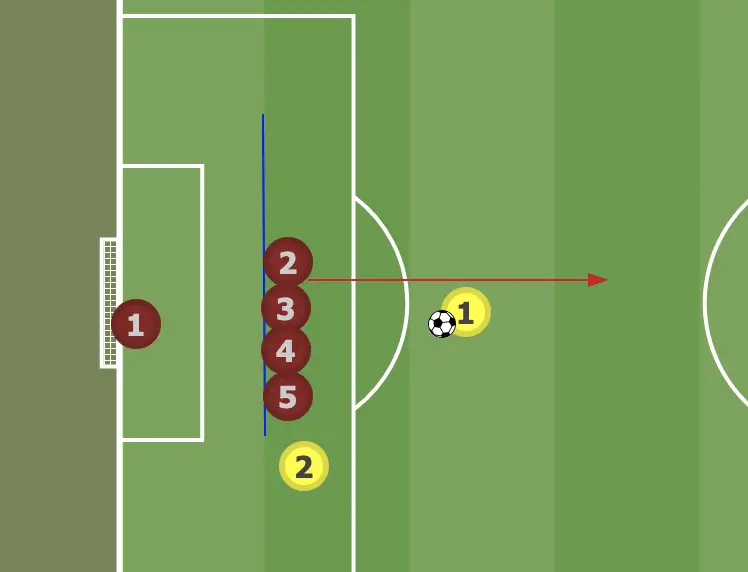
This catches the other attackers off-guard as they were expecting to attack the ball!

However, there are some things you may want to take note before using this tactic:
#1 You must not infringe the minimum distance between the wall and the ball
In Law 13 of the Laws of the Game, it states the minimum distance required between the defenders and the ball:
Until the ball is in play all opponents must remain at least 9.15 m (10 yds) from the ball, unless they are on their own goal line between the goalposts
When you and your teammates run forwards to try and catch the player offside, you have to take note of this distance!
This is because the foul will be called against your team. You or your teammates would have made the first offence, before the attacker committed the offside offence.
#2 You need to have very good communication with your teammates
An offside trap requires exceptional communication with your teammates.
This is because if any of your teammates are unaware about the offside trap, they may not make the run forward.
This will result in your teammate still playing the attackers onside!
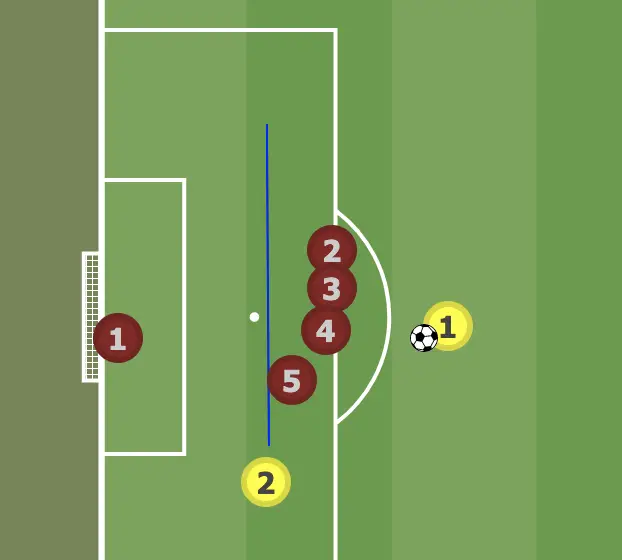
Why do players still stand in an offside position during a free kick?
You may see that some attackers still choose to remain in an offside position when a free kick is being taken.
But why is this so?
One possible reason is because it may be harder for defenders to mark you.
When you are standing behind the wall, the defenders in the wall have to keep an eye of you. This way, they will be quite distracted because:
- They have to block your teammate’s shot
- They have to make sure that you are not left open to score a goal
Moreover, they can’t leave the wall to mark you, as:
- This will leave a hole in the wall, making it easier for your teammate to score
- This will cause everyone else to be onside since the defender may now be closer to the goal-line
If you are able to time your run well, you may not be in an offside position when your teammate plays the ball!
This can be very unsettling for the defenders as they can’t decide what they should do when defending this set-piece.
As such, continuing to stay offside during a free kick may be one tactic that you can use!
Conclusion
You can be offside from a free kick, if you meet the following criteria:
- You are in an offside position when your teammate plays the ball
- You are actively involved in play
The free kick is the only set piece where you can be considered offside. You cannot be offside from other set pieces, such as a corner kick or a goal kick!
You can find out more about why we need the offside rule here.
If you’re looking to buy the latest football merchandise from your favourite club, you can check out the latest deals at Kitbag.
Subscribe to Telegram and Twitter to get the latest updates!

Are you passionate about football and want to earn some side income?

